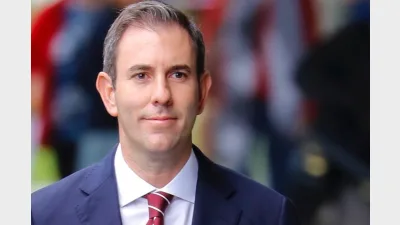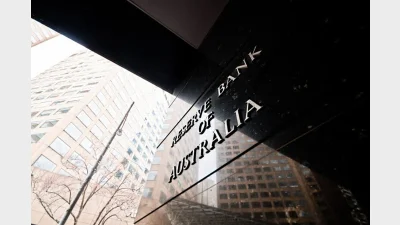(March-2004) Path to be cleared to bankrupts’ super
Bankruptcy trustees may have access to superannuation as an asset available for distribution to creditors if a recently foreshadowed bill is enacted.
The aim behind the legislation is to enlarge the pool of assets of the bankrupt available to satisfy creditors and to thwart attempts by a bankrupt to dispose of assets with the intention of leaving insufficient funds to repay creditors.
In a recent announcement, the Federal Government said it was intending to close the loophole exposed in the High Court decision in Cook v Benson last year.
In that case, the High Court of Australia determined that superannuation contributions made by a person, who at a later time becomes bankrupt, could not be “clawed back” by the trustee in bankruptcy for the benefit of the bankrupt’s creditors.
Benson’s case
Benson had been employed by Industrial Sales & Service (Tas) (ISAS) between July 1972 and April 1990. During that time he was a member of ISAS’s superannuation fund and had accrued benefits in that fund.
In April 1990, Benson’s employment with ISAS was terminated and he became entitled to a lump sum of $96,192.36 from the ISAS’s superannuation fund. That amount was subsequently paid to him in September 1990. At that time, Benson was a man in his 40s so that if the funds had not been rolled over they would have attracted significant tax.
In May 1990, a judgment had been entered against Benson for an amount of $35,216.25 which remained unpaid.
Upon payment of his entitlements from the superannuation fund, Benson engaged a financial planner and subsequently “invested” $80,000 of that amount in three payments into three different approved superannuation funds. Benson became a bankrupt in July 1992, when a sequestration order was made against his estate. The bankruptcy was deemed to commence on September 18, 1991.
After the sequestration order was made, the trustee in bankruptcy attempted to recover the $80,000 as void payments made within two years before the commencement of his bankruptcy, as the Act then provided.
The majority of the High Court, comprising Gleeson CJ and Gaudron, Hayne and Heydon JJ, determined that the contributions made to the superannuation funds by Benson were not void as against the trustee in bankruptcy.
Recent developments
The offices of the Attorney-General and the Minister for Revenue and Assistant Treasurer are collaborating on legislation to close the super loophole exposed in Cook v Benson. In mid-December 2003, the Federal Government announced that it “has moved to avoid abuse of bankruptcy laws by making changes to prevent manipulation of superannuation payments”.
According to the Insolvency and Trustee Service Australia (ITSA), the amendments to the Bankruptcy Act will insert a new provision, allowing for bankruptcy trustees to recover:
n excessive voluntary superannuation contributions and payments to Retirement Savings Accounts (RSAs) made prior to the bankruptcy, and
n any transfers to superannuation funds or RSAs made by a bankrupt prior to bankruptcy where the transfer was made with the intention to defeat creditors.
If the Bill makes its way into law, all super contributions made by a bankrupt after December 16, 2003 would be caught by the new provisions. Pre-bankruptcy rollovers would also be caught.
This means that if the contributions fell within the ‘clawback’ provisions, the bankrupt’s trustee would be able to add those funds to the asset pool available to creditors.
A definition of ‘excessive’ in the context of voluntary superannuation contributions is not yet available. However, ITSA indicates that the excessive personal contributions clawback provision would be limited to after-tax money.
Defeat of creditors
The second proposed clawback provision concerns transactions conducted with the intention to defeat creditors.
This provision would, when introduced, allow a bankrupt’s trustee to set aside contributions and any other transfers made at any time prior to bankruptcy where the transfer involved property that would probably have been available to creditors if the property had not been transferred.
Clearly, further clarification on this clawback provision will be required. What we can say is that the Parliament’s expressed intent is to allow a bankrupt’s trustee to recover certain assets — even where consideration of the type found by the High Court in Cook v Benson is present.
The onus of establishing that the transfer was made with the intention to defeat creditors will rest with the bankrupt’s trustee. Depending on the eventual definition of ‘excessive’ the bankrupt’s trustee may also bear the burden of establishing that those personal contributions were ‘excessive’.
Either way, in our opinion the onus on the bankrupt’s trustee is not in nature any different from the onus a bankrupt’s trustee already bears in relation to other transfers suspected of being designed to defeat creditors, such as those caught under section 121 of the Act.
— Gerard Breen is a banking litigation partner at Dibbs Barker Gosling .
Recommended for you
The major changes to the proposed $3 million super tax legislation have been welcomed across the superannuation industry.
In holding the cash rate steady in September, the RBA has judged that policy remains restrictive even as housing and credit growth gather pace.
A new report warns super funds must rethink retirement readiness as older Australians use super savings to pay off housing debt.
An Australian superannuation delegation will visit the UK this month to explore investment opportunities and support local economic growth, job creation, and long-term investment.









